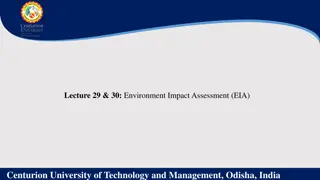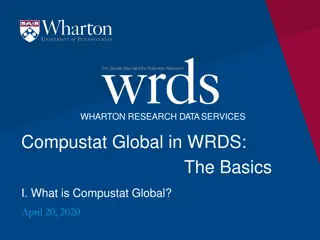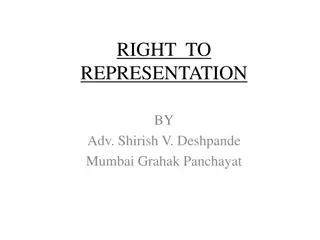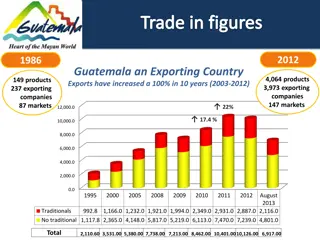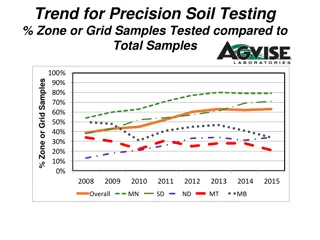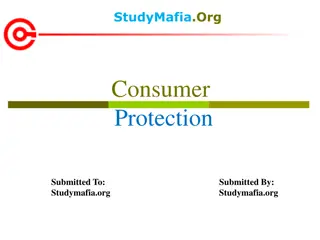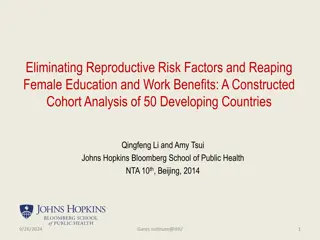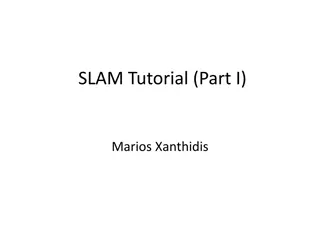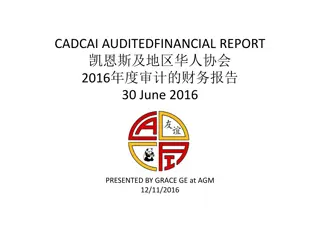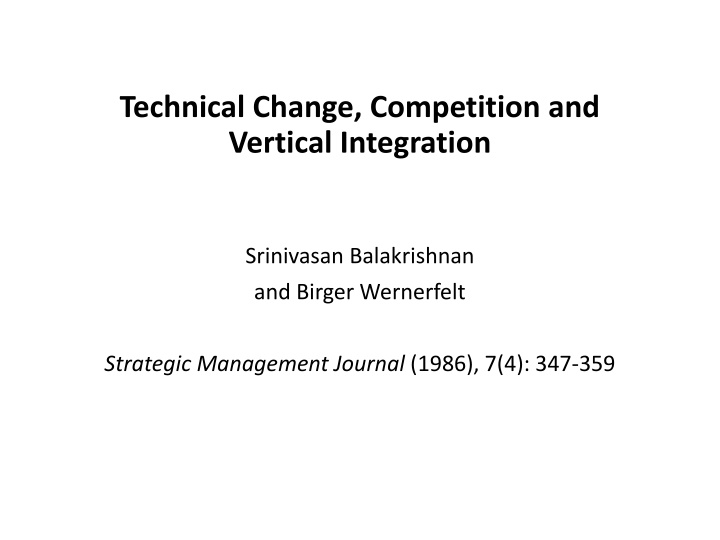
Vertical Integration Strategy for Long-Term Profit Maximization
Explore the analysis of vertical integration strategy for maximizing long-term profits in different industries. Understand the reasons behind why certain investments are more economically attractive for integrated firms than independent suppliers. Dive into theories of vertical integration, economies of integration, competitive considerations, and production factors that influence strategic decisions.
Download Presentation

Please find below an Image/Link to download the presentation.
The content on the website is provided AS IS for your information and personal use only. It may not be sold, licensed, or shared on other websites without obtaining consent from the author. If you encounter any issues during the download, it is possible that the publisher has removed the file from their server.
You are allowed to download the files provided on this website for personal or commercial use, subject to the condition that they are used lawfully. All files are the property of their respective owners.
The content on the website is provided AS IS for your information and personal use only. It may not be sold, licensed, or shared on other websites without obtaining consent from the author.
E N D
Presentation Transcript
Technical Change, Competition and Vertical Integration Srinivasan Balakrishnan and Birger Wernerfelt Strategic Management Journal (1986), 7(4): 347-359
Introduction The paper analyzes the vertical integration strategy from a long-term profit- maximization (i.e., NPV) perspective based on two premises. (a) strategy, by definition, relates to the future, which is almost always different from the present; (b) strategic decisions imply resource commitments, few of which can be revoked without incurring some costs. Research Question: Why are certain investments in the long run more economically attractive to be in integrated firms than done by independent suppliers? Ideas from TCE: the parties in a bilateral monopoly will spend a lot of resources bargaining over these profits, vs. bureaucratical costs existing in the hierarchy Vertical integration is less desirable/needed in industries with more participants Standard economic reasoning: high economic profits can arise from the existence of specialized assets (or specialized capabilities) The danger of vertical integration (possibility of technical obsolescence): The low value of specialized assets in their secondary use 2
Introduction The paper analyzes the vertical integration strategy from a long-term profit- maximization (i.e., NPV) perspective based on two premises. (a) strategy, by definition, relates to the future, which is almost always different from the present; (b) strategic decisions imply resource commitments, few of which can be revoked without incurring some costs. Research Question: Why are certain investments in the long run more economically attractive to be in integrated firms than done by independent suppliers? 1.High profits in the valued-added chain: the parties in a bilateral monopoly will spend a lot of resources, bargaining over these profits, vs. bureaucratical costs existing in the hierarchy Vertical integration is less desirable/needed in industries with more participants 2.Transaction cost: high economic profits can arise from the existence of specialized assets (or specialized capabilities) 3. Technological uncertainty (possibility of technical obsolescence): The low value of specialized assets in their secondary use 3
Theories of Vertical Integration The profit function of a downstream firm Vertical integration is preferred when, Economies of Integration Competitive considerations: higher revenue for integration Link integration with concentration: Integration introduces entry barriers to competition and decreases the number of industry participants Production considerations: lower production costs for integration Technological inseparability make the transfer of intermediate product costly Transactional economies : lower transaction costs for integration The small number of buyers or sales more bargaining efforts Balance between negotiation (bargaining) costs and bureaucratic costs The moderating effect of technological uncertainty Specialized investment + Technological instabilities Short life less valuable fewer profits fewer incentives to integrate 4
Analytic Model Aim to show the optimal level of integration in an industry increases with transactional economies, and decreases with bureaucratic diseconomies, competition, and technological instabilities. Competitive consideration Market transaction costs Bureaucratic diseconomies : the profit of the downstream firm v: the fraction of resources invested in the value-added chain in its industry s: the firm s market share in the consumer market m: the fraction of profit lost in market transactions b: the fraction of profit lost in bureaucratic transactions 5
Analytic Model Then adding the element of technological change and a given a value of v : The expected net present value of all future profits of the firm: T: the expected time to innovation that will wipe out the investment v i: the rate of return on the remaining part of the firm s capital (1-v) r: the discount rate (r > i) the optimal level of integration Where:
Analytic Model Considering three cases (1) v* = 0 (not to participate at all) (2) v*=1 (participate as much as possible) (3) 0<v*<1(the optimal level is in the middle of (1) and (2)) If i(r + 1/T) > rps(1 n): the industry is economically unattractive relative to alternative investments that the firm would prefer a negative level of participation. if i(r + 1/T) < rps(1 + m - 2b), the firm would prefer a positive level of participation if rps(1 n) < i(r + 1/T) < rps(1 + m - 2b), a comparative analysis: a) the optimal level of integration is lower in more competitive situations where the firm's market share is low. b) The higher technological instability (1/T), the Iower the optimal level of integration, especially when market shares are low. c) the optimal level of integration is higher if the industry is more profitable (rp), the alternative investments are less (i), and the associated bureaucratic costs (b) are less.
Empirical Test Research Setting to analyze technological instability (1/T) & competition (s) : Assume p, b, m, r, and i are identical across industries Sample of 93 SIC- 4-digit level manufacturing industries Measures: Vertical integration: the proportion of economic processes carried out within the firm (vertical integration index) Competitiveness : market share of a representative firm in an industry the average size of the largest firms in the industry which account for 50 percent of the total value of industry shipments. Technological instabilities: T is the average age of plant and equipment Estimation: NOFRM (1/s) measures the number of significant competitors; INNFRM (1/T) measures the technological instability 8
Empirical Results Two main empirical results: If the degree of competition is high, vertical integration is affected negatively by the frequency of technological change; The optimal level of vertical integration depends negatively on the degree of competition in the industry, which empirically corroborates the hypothesis generated from the mathematical model. 9



